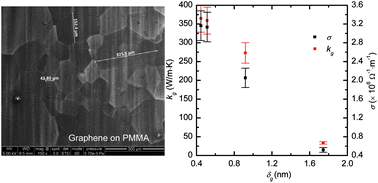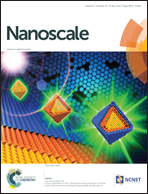Thermal conductivity of giant mono- to few-layered CVD graphene supported on an organic substrate
Abstract
The thermal conductivity (k) of supported graphene is a critical property that reflects the graphene–substrate interaction, graphene structure quality, and is needed for thermal design of a graphene device. Yet the related k measurement has never been a trivial work and very few studies are reported to date, only at the μm level. In this work, for the first time, the k of giant chemical vapor decomposition (CVD) graphene supported on poly(methyl methacrylate) (PMMA) is characterized using our transient electro-thermal technique based on a differential concept. Our graphene size is ∼mm, far above the samples studied in the past. This giant graphene measurement eliminates the thermal contact resistance problems and edge phonon scattering encountered in μm-scale graphene k measurement. Such mm-scale measurement is critical for device/system-level thermal design since it reflects the effect of abundant grains in graphene. The k of 1.33-layered, 1.53-layered, 2.74-layered and 5.2-layered supported graphene is measured as 365 W m−1 K−1, 359 W m−1 K−1, 273 W m−1 K−1 and 33.5 W m−1 K−1, respectively. These values are significantly lower than the k of supported graphene on SiO2, and are about one order of magnitude lower than the k of suspended graphene. We speculate that the abundant C atoms in the PMMA promote more ready energy and momentum exchange with the supported graphene, and give rise to more phonon scattering than the SiO2 substrate. This leads to a lower k of CVD graphene on PMMA than that on SiO2. We attribute the existence of disorder in the sp2 domain, graphene oxide (GO) and stratification in the 5.2-layered graphene to its more k reduction. The Raman linewidth (G peak) of the 5.2-layered graphene is also twice larger than that of the other three kinds of graphene, indicating the much more phonon scattering and shorter phonon lifetime in it. Also the electrical conductivity of the 5.2-layered graphene is about one-fifth of that for the other three. This further confirms the poor graphene quality of sample 4S, explaining its much lower k.


 Please wait while we load your content...
Please wait while we load your content...